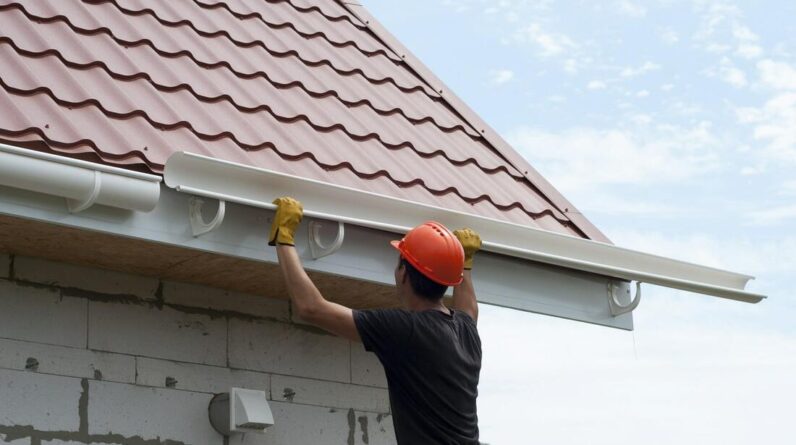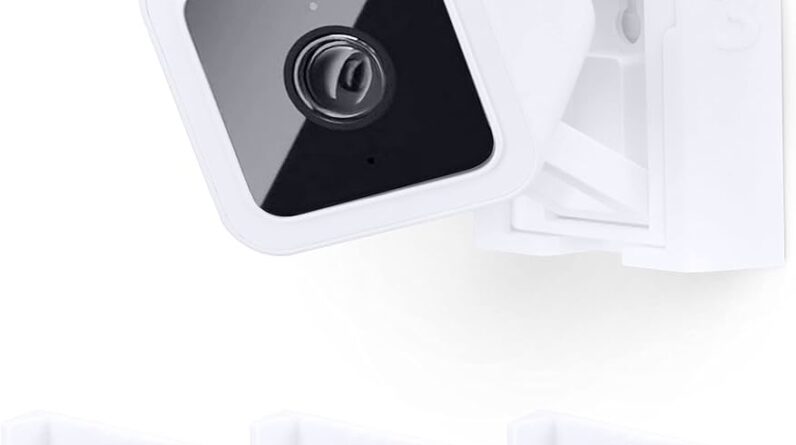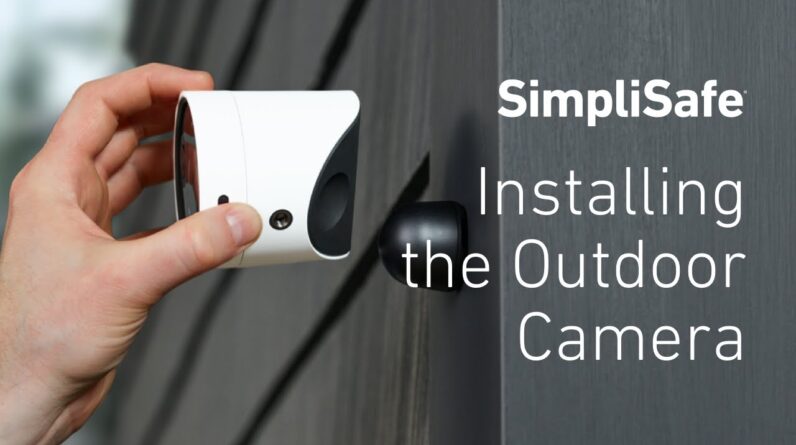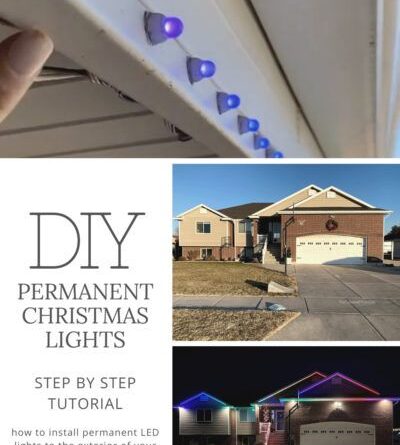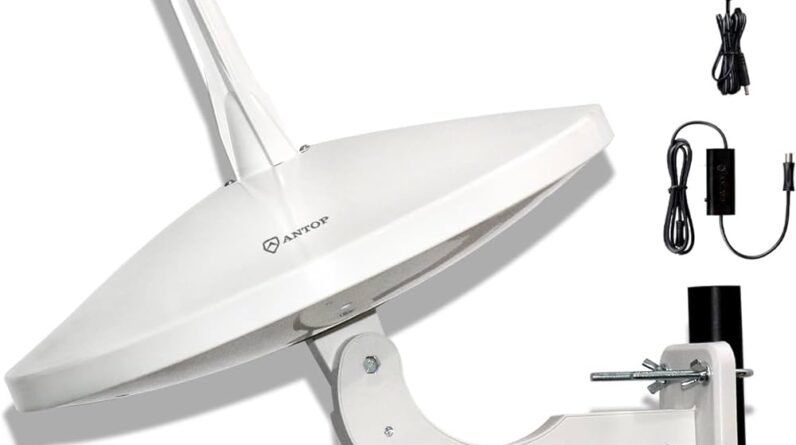
To install an antenna in the attic, first, choose the right location and orientation for optimal reception, then mount the antenna securely to the attic walls or ceiling. Consider factors such as line-of-sight, surrounding structures, and interference sources.
Installing an antenna in the attic can be a convenient and effective way to receive over-the-air (OTA) television signals. Whether you want to cut the cord or simply enhance your existing cable or satellite TV setup, a well-installed attic antenna can provide you with crystal-clear reception and access to an array of local channels.
With the right tools and know-how, setting up an antenna in the attic can be a straightforward process. This article will guide you through the steps required to successfully install an antenna in your attic, enabling you to enjoy your favorite shows and movies without the high cost of a cable or satellite subscription. So, let’s get started!
Choosing The Right Antenna For Your Attic
Factors to consider when selecting an antenna:
Understanding signal strength and range:
When installing an antenna in your attic, it is important to consider the signal strength and range of your desired channels. Research the signal reception in your area to determine the strength you require for smooth transmission. Keep in mind that obstacles such as trees or buildings can affect the signal, so choose an antenna with sufficient range to overcome these obstacles.
Researching the best antenna options for attic installation:
Take the time to research different antenna types to find the best fit for your attic installation. Consider factors such as size, design, and installation requirements. There are various types of antennas available, including omnidirectional and directional antennas, so choose one that suits your specific needs. Look for antennas with good reviews and ratings to ensure quality and performance. By carefully analyzing these factors, you can select the right antenna for your attic installation.
Assessing Attic Space Suitability
Assessing the suitability of your attic space for antenna installation is the first step before proceeding with the process. One important consideration is to check for potential obstructions and interference that could affect the signal reception. Take a thorough look at the attic to identify any objects, such as metal or wiring, that may obstruct the antenna’s view of the signal source. Additionally, assess the presence of any nearby sources of interference, such as electrical equipment or neighboring structures.
Measuring the signal strength in your attic using a signal meter is another crucial step in determining the suitability of your attic. Use a signal meter to measure the strength of the signal in various areas of the attic and note any significant variations. This will help you identify potential dead zones or areas with poor reception.
By carefully assessing the attic space for potential obstructions and measuring the signal strength using a signal meter, you can make an informed decision about whether or not your attic is suitable for antenna installation.
Preparing Your Attic For Antenna Installation
Preparing your attic for antenna installation involves several important steps. First, clear and clean the attic space to make room for the antenna. Remove any unnecessary items and ensure there is enough space for the antenna to be installed.
Next, it is crucial to ensure proper ventilation and temperature control in the attic. A well-ventilated attic helps prevent heat build-up and increases the lifespan of the antenna. Consider installing a fan or improving insulation to maintain an optimal temperature.
Lastly, secure any loose or hanging objects in the attic. Vibrations caused by the antenna or strong winds could potentially cause damage if items are not properly secured. Use hooks, straps, or other fasteners to secure objects to prevent accidents.
Gathering The Necessary Tools And Equipment
When installing an antenna in the attic, having the right tools and equipment is crucial to ensure a successful installation. Here are the essential items you will need:
| Tools | Equipment |
|---|---|
| Drill with bits | Antenna |
| Screwdrivers | Coaxial cables |
| Wrench set | Grounding wire and clamp |
| Level | Mast |
| Tape measure | Mounting brackets |
| Stud finder | Grounding block |
In addition to these tools, you may also need cable management equipment such as clips and zip ties to organize the cables properly. Grounding is an important aspect of antenna installation, so make sure to have the necessary equipment for it.
Lastly, don’t forget about safety gear. Wear safety glasses to protect your eyes from debris and gloves to prevent injuries. A hard hat is recommended to protect your head, especially when working in tight spaces.
By having all the essential tools, equipment, and safety gear, you can proceed with confidence to install your antenna in the attic.
Mounting And Positioning The Antenna
When installing an antenna in the attic, it is important to consider the mounting and positioning of the antenna to ensure optimal signal reception. Start by locating the optimal position for the antenna in the attic. This can be done by considering factors such as the proximity to windows and walls, as well as any obstructions that may affect signal strength. Once the optimal position is identified, choose the appropriate mounting hardware to securely install the antenna. This may include brackets, screws, or adhesive mounts, depending on the type of antenna and the surface of the attic. Once the antenna is mounted, adjust it for optimal signal reception. This may involve tilting or rotating the antenna to find the best signal strength. It may also be helpful to use a signal strength meter or consult a professional if needed.

Credit: www.amazon.sg
Running The Coaxial Cable
- Plan the cable path carefully to ensure a clean and efficient installation.
- Avoid running the coaxial cable alongside electrical wiring to minimize interference.
- Secure the coaxial cable properly using clips or staples to prevent it from sagging or being damaged.
- Ground the coaxial cable to protect against electrical surges and ensure proper functioning.
When installing an antenna in the attic, planning the cable path is crucial for a clean and efficient installation. Avoid running the coaxial cable alongside electrical wiring as this can introduce interference. It's important to secure the cable properly using clips or staples to prevent it from sagging or being damaged. Additionally, grounding the coaxial cable is essential to protect against electrical surges and ensure proper functionality. By following these steps, you can successfully run the coaxial cable for your antenna installation.
Connecting The Antenna To Your Tv
Understanding the connection types and compatibility plays a crucial role in installing an antenna in the attic. Different antennae require different connection methods, depending on the available connectors on your TV. Make sure to check if your TV supports UHF or VHF frequencies, as this will determine the type of antenna connector you need. Once you have determined the connection type, you can proceed to install the connectors and splitters, if necessary, to route the signal from the antenna to your TV.
Before finalizing the installation, it is essential to test the antenna reception on your TV. This step ensures optimal signal strength and allows you to make any necessary adjustments. Simply scan for channels on your TV and check for any signal disruptions or weak reception. If required, reposition the antenna or adjust the angle for better performance. With the antenna properly connected and tested, you can now enjoy high-quality TV reception in the comfort of your home.
Troubleshooting Common Issues
Looking to install an antenna in your attic? Troubleshoot common issues easily with these helpful tips for a successful installation. Ensure a strong signal and enjoy uninterrupted TV reception.
Identifying And Resolving Signal Loss Or Interference Problems
Dealing with weak reception in the attic can be a frustrating issue, but there are several steps you can take to improve your signal quality. Firstly, check the positioning of your antenna to ensure it is facing the correct direction for optimal signal reception. You may also want to adjust the height or angle to find the best position for the antenna in the attic. Additionally, consider installing a signal amplifier to boost the weak signal and improve reception.
Another common issue when installing an antenna in the attic is interference problems. Some potential sources of interference include electrical wiring, metallic objects, or even neighboring electronics. To minimize interference, make sure your antenna is properly grounded to divert any unwanted electrical currents. Additionally, avoid placing the antenna near large metal objects that could obstruct the signal.
Ensuring proper grounding and electrical safety measures is crucial when installing an antenna in the attic. Proper grounding helps to protect your equipment from power surges and reduces the risk of electrical accidents. Consult a professional electrician if you are unsure how to properly ground your antenna.
Maintenance And Care For Attic Antennas
Regular inspection and cleaning of the antenna system is essential to maintain its optimal performance. Inspect the antenna and cables periodically, looking for any signs of damage or wear. Ensure that the antenna is securely mounted and that all connections are tight to prevent signal loss. Clean the antenna and cables by gently wiping them with a dry, soft cloth to remove dust and debris.
Updating and adjusting the antenna as needed will help to improve its reception. Keep an eye on signal strength and quality, and if necessary, reposition or realign the antenna to achieve the best possible reception. Consider using a signal meter to assist with fine-tuning the antenna’s aim.
Protecting the antenna from extreme weather conditions is crucial for its longevity. Shield the antenna from direct exposure to sunlight and take precautions to prevent water and moisture damage. Add a protective coating or weatherproofing material if necessary. During storms, disconnect the antenna from power sources to avoid potential electrical damage.
Frequently Asked Questions Of How To Install An Antenna In The Attic
How Do I Install An Antenna In The Attic?
To install an antenna in the attic, start by choosing the right location to ensure good signal reception. Then, assemble the necessary tools and equipment, such as coaxial cables, connectors, and mounting hardware. Next, connect the antenna to the TV using the coaxial cable and secure it in the attic using the mounting hardware.
Finally, scan for channels on your TV to complete the installation process.
Why Should I Install An Antenna In The Attic Instead Of Outdoors?
Installing an antenna in the attic offers several benefits. It protects the antenna from weather elements, such as wind and rain, which can affect the signal quality. Additionally, it prevents potential damage or theft that may occur when an antenna is installed outdoors.
Installing in the attic also keeps the aesthetic appeal of your home intact, as the antenna is concealed from view.
Will An Attic-mounted Antenna Provide Good Signal Reception?
Yes, an attic-mounted antenna can provide good signal reception. However, signal quality can be affected by the distance from the TV station transmitters, obstructions in the attic, and interference from nearby electronic devices. To improve the signal reception, ensure that the antenna is properly positioned, the cables are shielded, and there is minimal interference in the attic.
Conclusion
Installing an antenna in the attic can greatly improve your TV reception without the need for an unsightly outdoor antenna. With a few simple steps and some basic tools, you can enjoy high-quality digital TV signals and access a wider range of channels.
By carefully positioning the antenna and ensuring proper installation, you can enhance your viewing experience while maintaining the aesthetics of your home. So go ahead and give it a try – a world of entertainment awaits!

